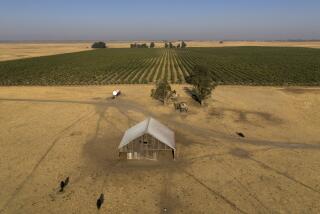Council Settles on Development Plan : Compromise Ends Greenbelt Dispute
- Share via
CORONA — A battle over development in the city’s agricultural greenbelt ended Thursday as Steve Caseldine, president of the Corona Chamber of Commerce, fed stacks of competing initiative petitions through a paper shredder.
Backers of two petition drives--greenbelt residents on one side and landowners on the other--had agreed to destroy the papers if the City Council approved a compromise master plan for the 4,900 acres of groves and fields in south Corona.
The council did just that on Wednesday night, unanimously agreeing to land-use and traffic-circulation plans to guide the greenbelt’s transition from an agricultural to an urban area.
The plans incorporated most demands of the area’s scattered residents, who wanted lower residential density around their homes and a cap of 12,500 residences in the greenbelt. The residents’ initiative, intended primarily as a bargaining chip, would have set a cap of 7,500 homes and severely restricted the rate at which those homes could be built.
Development of the greenbelt--about a quarter of the city’s area--is expected to nearly double Corona’s population.
Also on Thursday, the City Council approved, by a 4-0 vote in a special morning meeting, a $22.5-million municipal budget for the 1986-87 fiscal year, a $2-million increase over last year.
The spending plan increases staffing in most city departments, but “there are no major changes in service programs of the various departments,” City Manager James D. Wheaton said.
“A growing city is producing a need to respond to service requirements, and that is the (principle) that guided the budget’s design,” Wheaton said in a memorandum to the council.
The budget projects general fund expenditures of $21.3 million and a $1.2-million surplus at the end of the fiscal year next June.
The largest expenditures are for the Police Department, 29.71% of the general fund pie; the Fire Department, 17.88%, and public works services, 10.72%.
Smaller departments received the largest increases over last year, with the city clerk’s budget increasing from $126,290 to $170,397, or almost 35%. The animal control budget increased by a third.
More to Read
Sign up for Essential California
The most important California stories and recommendations in your inbox every morning.
You may occasionally receive promotional content from the Los Angeles Times.













